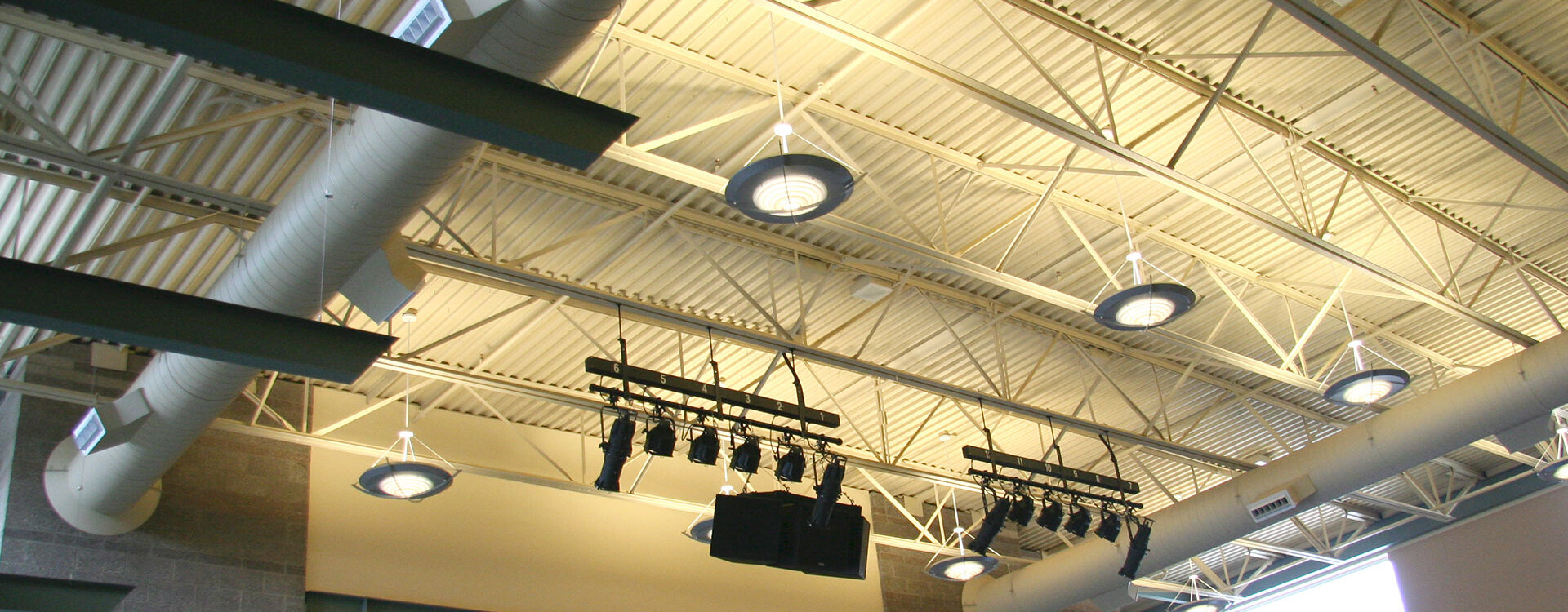
Many California public agencies such as schools, city governments, and more are facing similar challenges with their facilities: their buildings are aging, and operating costs are increasing over time, but most lack the funding necessary to address these issues.
The aging aspect is obvious, but the increase in operating costs may not be. As building equipment like heating, ventilation, and air conditioning (HVAC) systems, lighting fixtures, and other critical equipment ages, it loses operating efficiency. For HVAC systems, the equipment must work harder and longer to keep the desired temperature, meaning energy costs can significantly rise.
Over time, as this equipment continues to lose efficiency, these operating costs continually rise until eventually the equipment will need to be replaced. Sometimes, a piecemeal process of replacing equipment (or deferring critical projects altogether) is necessary because of a shortage of available funding — a fundamental challenge for many public agencies.
When HVAC equipment fails and needs to be replaced quickly, facility teams will often be forced to utilize whatever equipment is available, often at elevated prices. In addition, available equipment will often not deliver optimal performance.
Due to a lack of consistency in your system, a piecemeal process of replacing and upgrading equipment can also cause numerous operating issues, making it harder to maintain and operate your buildings the way you want to. Additionally, the total time spent on procurement, requesting funding, handling job walks, and working through the buying process could often be better spent on other work. As many facility directors look for a solution to effectively take care of everything at once, California's Government Code (GC) 4217 offers better options.
What is GC 4217?
GC 4217 (specifically 4217.10–18) is a procurement policy that allows public agencies to enter into a range of services related to infrastructure improvements such as energy conservation, generation, or purchase. While that may sound like it's strictly related to replacing your fluorescent lighting with LED lighting to save money, GC 4217 is a much broader code with a more expansive intention.
This code is not a program or a grant fund, but rather is a procurement code that allows public agencies to enter into purchase agreements that can address a wide range of infrastructure needs. For example, need to upgrade agency-wide HVAC equipment and replace the roofs that the equipment sits on at the same time? GC 4217 can help you do that. Want to replace windows, repair your central plant, and install solar photovoltaics and a battery storage system? GC 4217 can help you procure that as well.
GC 4217 was written to be intentionally broad in order to provide maximum flexibility for agencies to use in a variety of ways. Some agencies use GC 4217 to purchase power, while others use it as a procurement vehicle to buy design-build retrofit projects with multiple disciplines like HVAC, lighting, roofing, windows, electrical, irrigation, plumbing, and anything else related to necessary operating or utility costs.
GC 4217 also allows agencies to enter into finance agreements to fund these projects, often with resultant cost savings as a revenue stream to repay the debt obligation. GC 4217 even allows agencies to pick their vendor partner based on their own best value criteria, allowing you to work with your preferred partner without having to default to a low bid.
What does GC 4217 mean for you?
GC 4217 can be useful for your agency if you need a lot of facility upgrades or improvements — and can be an absolute game changer if you don't have the funding to do them. Not having the resources and funding required to develop a coordinated plan to complete work in a timely manner is a common problem for public agencies. Therefore, it can take years to work through the list and get everything fixed, resulting in the fact that you might have to start over again due to lost time.
This is often a function of the low bid process that is completed using capital expenditure dollars, which are often in short supply. GC 4217 can provide a procurement method to select a partner to design a comprehensive plan to do the work in short order so that you get a lot of work done at once, enabling your equipment to function all together as you need it to and making it much easier to run your buildings.
Most facility directors know that projects which aren't visibly public (e.g., think of a roof replacement versus a newly constructed, state-of-the-art gymnasium) are lower priority for funding simply because most people won't see the impact.
People complain (and rightly so) when a roof is leaking, but nobody comments when a roof isn't leaking because they expect there to be a functional, water-tight roof. Not many people will think about the cost and effort to maintain that functionality. But, a new state-of-the art gymnasium will have people talking and gushing over how great it looks. Few people outside of the facility department want to prioritize spending money on keeping the roof from leaking when that money could be spent on a beautiful new building that showcases the community.
The financial advantage of GC 4217 is that your agency can enter into a financing agreement to fund the work. There is a myriad of financial solutions that you can choose from to meet your needs now over a term period that works best for you, tying in different savings streams, incentives, and grant programs. This prevents you from being restricted to use budget leftovers after the crowd-pleasing projects have been funded.
How to choose the right partner?
When choosing the right company to partner with, first start by thinking outside of the box to address more of your needs. GC 4217 explicitly gives you the latitude to address infrastructure needs beyond simple upgrades for energy conservation purposes.
Ask:
- Do you need to replace windows?
- Do you have indoor air quality issues due to COVID-19?
- Do you have a need for power resiliency because your buildings are used as emergency shelters during wildfires?
Answers to these questions and solutions to address these problems can all be procured in the same project using GC 4217.
- Step One
Think of stretching your available budget and identifying your available capital. Then, look at all third-party funding sources including utility incentive programs, state and federal grants, and all financing options so that you are leveraging your money to the best of your ability. - Step Two
Come up with a flexible plan. If there's just too much work for your agency to consider all at once, try a phased approach. Identify multiple project types or buildings that you can bundle into one phase. Then, complete that phase and move onto the next phase, working through all of your projects systematically. - Step Three
Be choosy about who you work with. Look for a partner who understands your objectives and has been successful in helping achieve similar goals for comparable agencies. Ideally, your partner should be able to help you with all of these needs and collaborate with you to develop a good plan, addressing your specific requirements and identifying the right funding solutions for optimal operational outcomes and project success.
Overall, GC 4217 provides many options to address multiple infrastructure needs at once. By evaluating your budget, identifying your capital, prioritizing which projects you want to complete, and choosing the right partner, GC 4217 can help keep your buildings operating efficiently for many years to come.
Senior Account Executive
Dominic Cardenas is a Senior Account Executive at Southland Energy. Focusing on government funding for infrastructure improvements, energy conservation, and resiliency, he is responsible for helping public and private clients improve infrastructure by identifying available outside funding sources.
Related Reading




